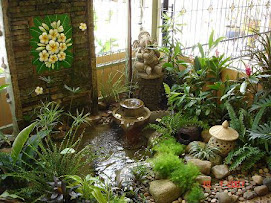Ancient Hydroponics Gardens
By Susan Slobac
The word “hydroponics” is derived from two Greek words: cidra, meaning water, and punikos, meaning labor; thus, literally “waterworks.” Contrary to popular belief, hydroponic gardening is an ancient form of agriculture, going back 3,000 years. There are references to the cultivation of plants directly in water in Egyptian records dating back to the time of the New Kingdom and the “Woman-King,” Pharoah Hatshepsut around 1460 BCE.
The best-known hydroponic gardens of the ancient world were the Hanging Gardens of Babylon. Also known as the Gardens of Semiramis, the Hanging Gardens are reputed to have been located near Al-Hillah in present-day Iraq, and were regarded as one of the Seven Wonders of the Ancient World.
The Hanging Gardens were built by King Nebuchadnezzar around 600 BCE. His wife, Amytis, was from Media, whose people were the ancestors of the modern Kurds. The country of Medea was a mountainous one, roughly corresponding to present-day Kurdistan, northern Iran and Azerbaijan. Legend says Amytis became homesick for the mountains and the flora of her homeland; Nebuchadnezzar had the Gardens constructed for her. According to Greek historians of the time, the Hanging Gardens, a water pipe led into a well tower, which supplied water via a number of vaults for fruit trees growing in a layer of asphalt.
Centuries later, Italian traveler Marco Polo, who reportedly visited China during the late 13th Century CE and introduced pasta to Italy, commented on what he called the “Floating Gardens.” Around the same time on the other side of the world, the Mexica – one of the native peoples who later formed the Aztec Empire of Mexico – built a city called Tenochtitlan on the shores of Lake Texcoco. Where Mexico City stands today, the Mexica constructed an extensive urban center that included a type of early hydroponic system upon which plants were cultivated on the surface of the water. These early Mexican “floating gardens” were developed out of necessity, because arable land was at a premium in the area. Called chinampas, they were actually small, artificial islands that were created by scooping up mud from the marshy areas bordering the lakes. This mud was ultimately held together by tree roots; food plants were cultivated on these “islands,” and were amazingly productive.
The modern history of hydroponics actually begins in 1627, when Sir Francis Bacon’s Sylva Sylvarum was published posthumously. In this treatise, Bacon – an English philosopher and contemporary of Shakespeare – wrote about the cultivation of terrestrial plants without soil. Although Bacon died before his theories could be explored, the idea of water culture caught on as an area of scientific study throughout the remainder of the 17th Century. By the 1860s, German botanists Julius von Sachs and Wilhelm Knop had perfected the first nutrient solutions for soilless agriculture, and modern hydroponic gardening was born.
Article Source: http://www.Free-Articles-Zone.com


